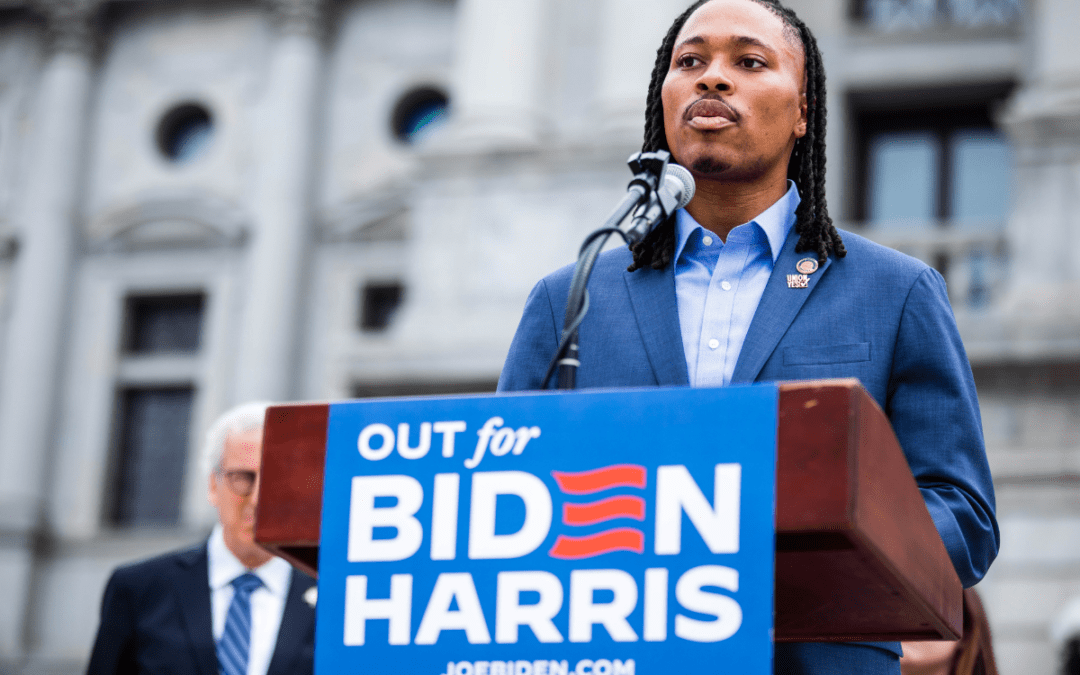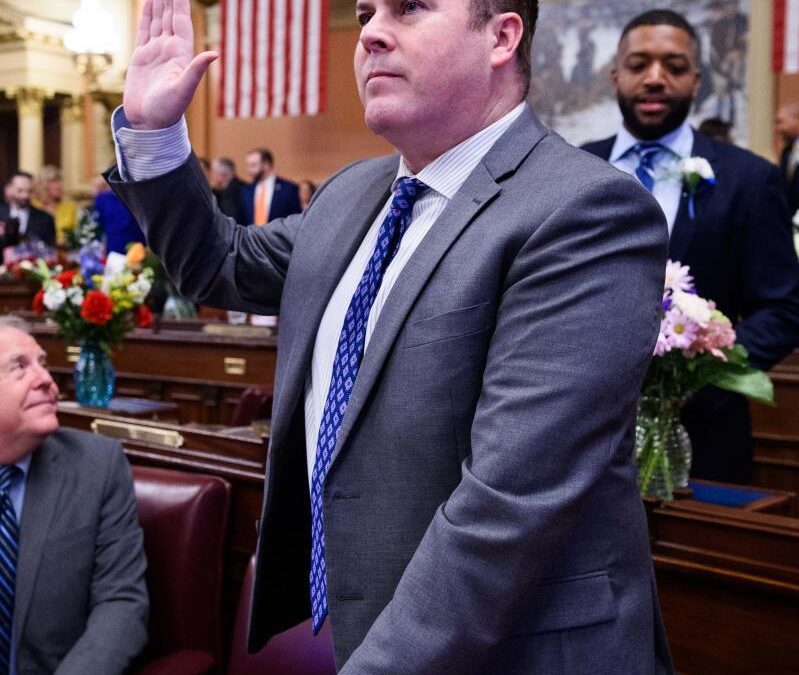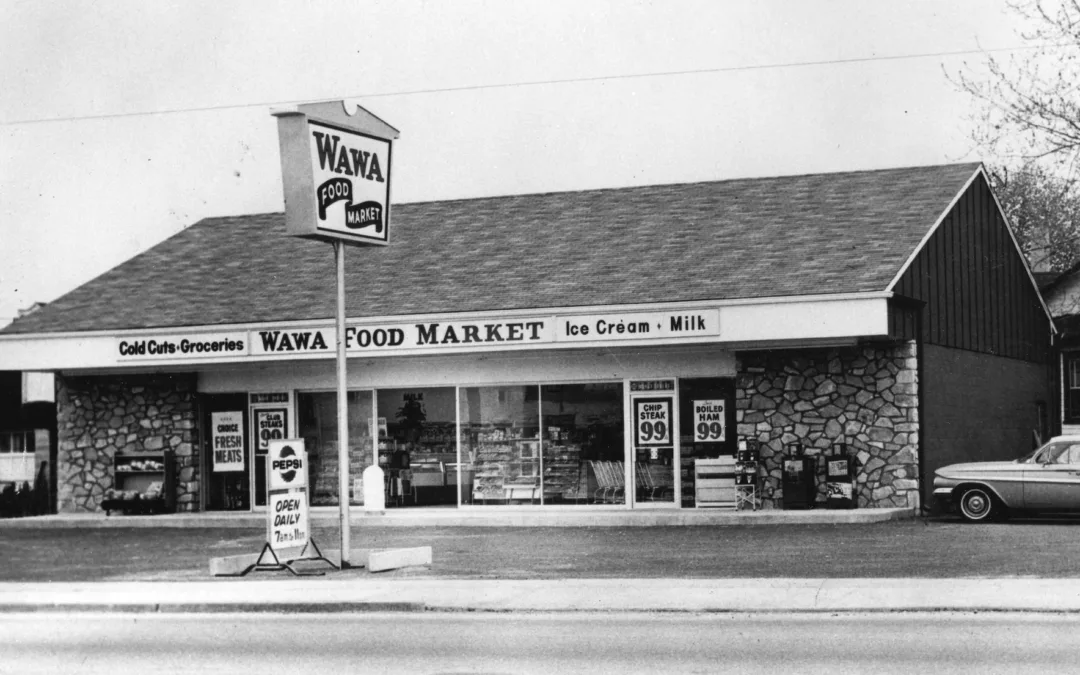
Photo via subject, treatment by Tania Lili
More than 29 million Americans reported not having enough food to eat in late July, and millions more now count themselves on the verge of falling into hunger.
Natosha McCray is worried.
A 40-year-old single mother of two, McCray is one of the millions of Americans who has relied on a patchwork system of unemployment benefits, food assistance programs, school meals, and food pantries to keep her family fed during the coronavirus pandemic.
The Bronx resident already received help through the Supplemental Nutrition Assistance Program (SNAP) and the Women, Infants, and Children (WIC) program prior to the pandemic. As a self-employed tutor who lost out on work after the pandemic began, she qualified for the $600-a-week federal unemployment supplement. She was also able to get assistance through the Pandemic EBT program, a debit-card benefit for families with children who lost access to free- or reduced-price school meals when schools shut down.
But now, much of that aid is gone or about to go away.
The Pandemic EBT program expired at the end of June and the $600 federal unemployment supplement ended a month later. House Democrats voted in May to extend Pandemic EBT and renew the federal unemployment supplement through January 2021, but Republicans refused to hold a vote on the bill. They instead introduced their own alternative at the end of July that would be of much less help to people like McCray.
“I am afraid of what September will look like,” McCray said.
The bad news doesn’t end there. Her daughter, Ariana, turned five this month, meaning McCray is no longer able to purchase food using WIC vouchers, which previously helped her buy staples like milk, eggs, cheese, yogurt, bread, cereal, and vegetables.
Her SNAP benefits may also come to an end after the Trump administration announced recently that it would once again require struggling families like McCray’s to prove their income in order to qualify for SNAP.
The U.S. Department of Agriculture (USDA) had previously suspended income reporting requirements during the pandemic, but is now forcing people who receive aid through SNAP to once again “recertify” their income. Since SNAP is income-based, McCray is concerned that the $600 federal unemployment aid she received will push her income above SNAP’s thresholds, causing her to lose her $509 a month in SNAP benefits as a result.
“That is the part that really worries me,” she said. “That will take away $509 on food options for my children a month.”
McCray and her children have started their own vegetable and herb garden, to try to become self-sufficient where possible, but she’s still growing increasingly nervous about how she’s going to feed Ariana and her 16-year-old son, Ethan.
She’s not alone.
‘Massive Hunger in America’
More than 29 million Americans (12%) reported not having enough food to eat in late July, the highest number reported during the coronavirus pandemic, according to the U.S. Census Bureau’s weekly Household Pulse Survey. That figure includes 23.9 million people who said they sometimes didn’t have enough to eat and 5.4 million who often lacked enough to eat.
The numbers are more stark among households with children, 15% of whom reported “sometimes” or “often” lacking enough food.
That figure may even be a significant undercount, according to the advocacy organization No Kid Hungry, which released a recent report that found nearly half of American families (47%) are currently struggling with hunger. The report’s authors surveyed and interviewed parents with school-age children (ages 5-17), who expressed existential fear of their children not having enough food to eat.
“It’s all so uncertain right now, the uncertainty is worrying to me. Where the food is going to come from,” Rebecca, a mother in Oregon, told researchers. “Food is in short supply, money is in short supply. Even just talking about it now is making my chest hurt.”
The report also found that Black (53%) and Latino (56%) families are disproportionately experiencing hunger, which is in line with other research that makes clear the pandemic is exacerbating already-present racial divides.
RELATED: Hispanic and Black Children More Likely to Be Hospitalized With “Severe” COVID-19 Symptoms
“COVID-19 isn’t only creating a new hunger problem; it is also exposing a deeply rooted issue that has long impacted families in our country,” said Billy Shore, founder and executive chair of Share Our Strength, the organization behind the No Kid Hungry campaign, in a statement.
Low-income workers and essential employees have also disproportionately suffered. Seventy-four percent of food-insecure working parents are in essential fields, such as health care, food service, and public works, with 27% earning less than $40,000 annually, according to the organization’s report. Faced with this devastation, approximately half are skipping meals or limiting the amount everyone eats in order to keep their children fed.
“The adults eat less food to make sure that the kids have food,” Melyssa, a New York mother told researchers. “We’re trying to do pretty much everything possible.”
Nearly 40% of parents have also had to skip paying bills in order to feed their families.
“Ever since the coronavirus has been going on, yes, I’ve had a hard time putting food on the table. I’m trying to decide what bills to pay first and what medications I should get,” James, a Georgia father, said. “Since school has been closed, my kids don’t eat every day.”
While McCray has been able to keep herself and her children fed, she said she’s been a “thrifty cook” and has put together low-cost meals. “Pots of spaghetti, soup, bags of chicken pieces have helped give them a variety of meals.” She’s also cooked foods in bulk and frozen them in order to “stretch” what she has.
No matter which way you slice it, one thing is clear to Joel Berg, CEO of Hunger Free America: “We still have massive hunger in America.”

‘We Didn’t Anticipate Anything This Dire’
While the severity of the devastation has shocked many, experts emphasized that the nation’s hunger crisis predated the pandemic and has simply been turbocharged. In 2018, even as the nation’s unemployment rate hit a 49-year-low, more than 37 million Americans, including 11 million children, were food insecure, according to USDA data.
“People think like it’s a brand-new phenomenon, when it’s just a massive expansion of the existing phenomenon,” Berg said. “We said all along, ‘If there’s this much problem [in 2018], when we have such a low official unemployment rate and when the stock market is soaring, imagine what we’re going to have in a recession.’”
While Berg wasn’t surprised that the pandemic made things worse, he acknowledged the severity of the suffering was not something he expected. “Even in our most [extreme] predictions, we didn’t anticipate anything this dire,” Berg said. “But you’re seeing the consequence of a tattered safety net, low wages, and inadequate savings. In 2018, about one in four Americans had zero savings.”
This lack of a social safety net, Berg continued, paved the way for the “deprivation” that’s happening now.
RELATED: This Is How Joe Biden Plans to Remake the American Economy
The worsening hunger crisis has forced Berg and his organization to dramatically ramp up their efforts. The group has seen an eight-fold increase in calls to its hunger hotline, which refers callers to private food resources, and has added staff accordingly.
Other food banks, food pantries, and nonprofit and philanthropic groups across the country have seen a similar surge in demand. Between mid-March and June 30, the Central Pennsylvania Food Bank, which covers 27 counties, distributed 7 million more meals than usual, an increase of 47%, according to Joe Arthur, the food bank’s executive director. About a third of that increase was driven entirely by new people seeking assistance, he said.
Nearly all 200 food banks in the Feeding America network have experienced a similar increase in demand, according to the organization, which is the nation’s largest hunger relief organization. Typically, Feeding America partners with 200 food banks and 60,000 food pantries and meal programs to provide meals to more than 40 million Americans.
Needless to say, 2020 is not typical. An analysis by the group found that approximately 54 million people (one in six Americans) may ultimately experience food insecurity in 2020, including 18 million children (one in four children).

‘The Best, Safest, and Most Effective Way to Feed Families’
It’s not just nonprofit and advocacy organizations that have seen an uptick in requests for help. More than 6 million people enrolled in SNAP between February and May, which represents a 17% increase in the number of people who receive benefits, according to a New York Times analysis. The Times analyzed 42 states and found that caseloads grew in 41 of them, with demand rising in rich and poor, and rural, urban, and suburban areas alike. In total, an estimated 43 million Americans now rely on SNAP, according to the Times.
The Central Pennsylvania Food Bank, which offers a toll-free phone number people can call to get help with their SNAP applications, has also found itself deluged by struggling Americans who are now turning to SNAP. “Applications were up in the 40-plus percent range, similar to physical food assistance,” Arthur said.
RELATED: 6 Million Signed Up for Food Assistance During the First 3 Months of the Pandemic
The surge in SNAP applications is not especially surprising to advocates, who said that while food banks and pantries are important pieces in the fight against food insecurity, SNAP is by far the most effective tool the U.S. has at its disposal. The program provides roughly nine times more food to people than the entire Feeding America network, including food banks.
“SNAP is the best, safest, and most effective way to feed families,” said Lisa Davis, senior vice president of Share Our Strength.
The program was a key resource during the Great Recession and its aftermath, providing food aid to as many as 46 million Americans and easing the scope and severity of poverty. The program, which enrolls fewer people during periods of economic growth, has proven extremely effective in combating hunger.
“I know it’s not fashionable to say a government program worked, but a government program worked,” Berg said. “You look at the SNAP program and it’s done exactly what it was designed to do.”
Beyond the enormous help it provides to families, SNAP has also been shown to be a huge boon to local economies, particularly in rural areas.
“Every dollar that someone spends in a food retail setting supports many other things. It’s supporting the cashiers who are checking them out and the food supply chains that are getting that food to those retailers and grocery stores,” Robert Campbell, managing director of policy at Feeding America, told COURIER earlier this year.
In fiscal year 2017, SNAP beneficiaries redeemed about $63 billion in SNAP benefits for food purchases, generating business for both local convenience and grocery stores as well as national supermarkets and big-box stores. A 2010 USDA study found that every $1 in additional SNAP expenditures generated $1.79 of economic activity.
Still, despite substantial evidence showing SNAP’s efficacy both before and during the pandemic, the Trump administration has failed to take all of the steps it could to bolster the program to better address the growing crisis.

‘Appalling Hypocrisy’
Republicans have long attacked SNAP and sought to make cuts or impose restrictions on the program, but even they recognized its utility during the early days of the pandemic, providing the USDA flexibility to expand SNAP benefits. The USDA did so in April, increasing the monthly SNAP benefits for families by 40%.
But the expansion only applied to households who were receiving less than the maximum allotment. It doesn’t help people like McCray and the 40% of SNAP recipients who tend to be “the hungriest, poorest people,” Berg said, and already get the maximum amount they’re eligible for.
Berg, Feeding America, and Democrats have all called for a 15% increase in the maximum SNAP benefit during the pandemic. Republicans have refused to consider such an expansion, even though the average SNAP benefit per meal is only about $1.34 per meal, according to Hunger Free America.
“We simply have to increase SNAP benefits and continue to make sure that families that are newly poor and may not know about SNAP are being connected with the program,” Davis said.
The Senate Republicans’ latest coronavirus relief legislation, introduced last month, did not include additional funding for food assistance; it does, however, include a 100% tax deduction on business meals through the end of 2020, and a five-year “liability shield” to protect companies from lawsuits over coronavirus-related legal claims.

This sort of corporate welfare, Berg pointed out, represents “appalling hypocrisy” and shows how out of touch lawmakers are with average Americans.
No Kid Hungry’s recent report backs that claim up, finding that 76% of people in the U.S. believe SNAP funding should be maintained or increased.
Berg also said that by refusing to expand SNAP, Republicans are making the case that they’re actually for hunger. “If they’re for taking billions of dollars of food away from hungry people, they’re pro-hunger. They can slice it however they want, but they’re pro-hunger.”
‘Developing-World-Style Poverty’
Democrats and advocates continue to beat the drum for increasing SNAP and its flexibility, and renewing other benefits, even as Republicans remain reluctant.
The stakes of the fight are incredibly high. With the $600-a-week federal unemployment benefit expired and its future up in the air, many of the 30 million Americans who relied on it are now likely to turn to SNAP, food pantries, and food banks to ensure their families have food to eat. But there’s only so much that facilities like the Central Pennsylvania Food Bank can do.
“We will do what we need to do for as long as it takes, but these federal and Pennsylvania relief assistance measures have been hugely impactful,” Arthur said.
That means that in the absence of the $600 weekly federal unemployment payment, SNAP’s enrollment is all but certain to grow. In other cases, people like McCray who have previously relied on SNAP but also received unemployment before it expired may no longer qualify because of the Trump administration’s income reporting requirements. This cruel twist of fate could ultimately accelerate the spread of COVID-19.
“There’s boatloads of evidence that people who are hungry or malnourished have compromised immune systems and are more likely to get the disease and pass it on,” Berg said. “Having this many number of people malnourished is clearly going to make it harder for us to all be healthy.”
The virus, of course, doesn’t need any more help spreading. More than 5 million Americans have been diagnosed with COVID-19, and high caseloads across the country have forced many school districts to shift to remote learning for the fall semester, which could cause many more children to miss out on essential food and nutrition.
In the early days of the pandemic, the Trump administration made it easier for tens of millions of students and their families to pick up free meals at nearby schools, without having to prove that they’re low-income. But with school already underway in parts of the country, the USDA has now refused to extend that flexibility.
Without it, parents like McCray may only be able to pick up food from the schools where their children are enrolled, and only if they’re deemed eligible for help, adding yet another barrier to remaining food secure.

The GOP has argued that these sorts of generous social welfare programs might disincentivize people from returning to work and school, preventing an economic recovery—an argument that Berg found astonishing. “It’s incomprehensible to me that they don’t understand that the economy can’t recover unless we recover from COVID,” he said.
Beyond the immediate consequences, failing to fund these programs will also have devastating long-term impacts on those who go hungry, especially children.
“The evidence is irrefutable that when kids get the nutrition that they need, they have better physical health, mental health, cognitive ability, they do better in school, and some studies even show that they have higher lifetime earnings,” Davis said. “And so if they’re going hungry, all of that goes away and their futures become more bleak and they have less opportunity, not just for the few years that this might endure, but for the rest of their lives.”
How bad could things get? Without a renewal of these various benefits and programs, “you really are going to see massive, almost developing-world-style poverty,” Berg said. “If we do not do these things—extend these programs, expand SNAP—we will have conditions like that.”
McCray hopes that she’s able to resume some of her tutoring this fall to bring in more income, but she’s not certain how realistic that is.
Like countless other Americans, McCray awaits action from Congress, frustrated. “I think they need to move faster in terms of less talk and more action and actually expand the SNAP program,” she said. “Lawmakers’ reluctance to extend or renew benefits hurts many families just trying to survive.”
She, like Berg, was not shy about expressing how she felt about their slowness to act.
“Stop making people suffer because of egos,” she said, addressing Republicans directly. “Do what you are in service to do and give your constituents what they deserve. If it was your family, you would move with urgency.”
Politics

Malcolm Kenyatta makes history after winning primary for Pa. Auditor General
State Rep. Malcolm Kenyatta, who was first elected to the state House in 2018, won the Democratic nomination for Pa. Auditor General and will...

Biden administration bans noncompete clauses for workers
The Federal Trade Commission (FTC) voted on Tuesday to ban noncompete agreements—those pesky clauses that employers often force their workers to...

Philadelphia DA cancels arrest warrant for state Rep. Kevin Boyle on eve of Pa. primary
Philadelphia District Attorney Larry Krasner said a detective had sought the warrant against Boyle, a Democrat whose district includes a section of...
Local News

What do you know about Wawa? 7 fun facts about Pennsylvania’s beloved convenience store
Wawa has 60 years of Pennsylvania roots, and today the commonwealth’s largest private company has more than 1,000 locations along the east coast....

Conjoined twins from Berks County die at age 62
Conjoined twins Lori and George Schappell, who pursued separate careers, interests and relationships during lives that defied medical expectations,...






